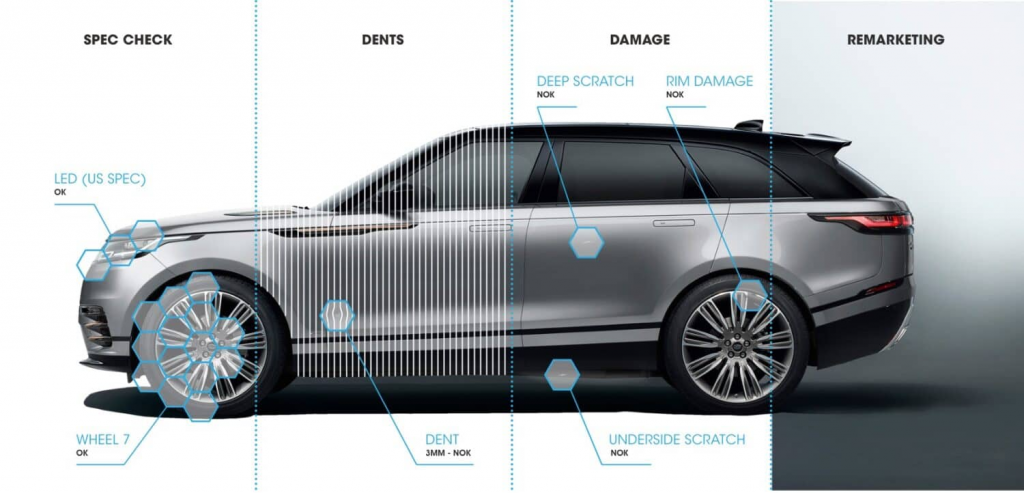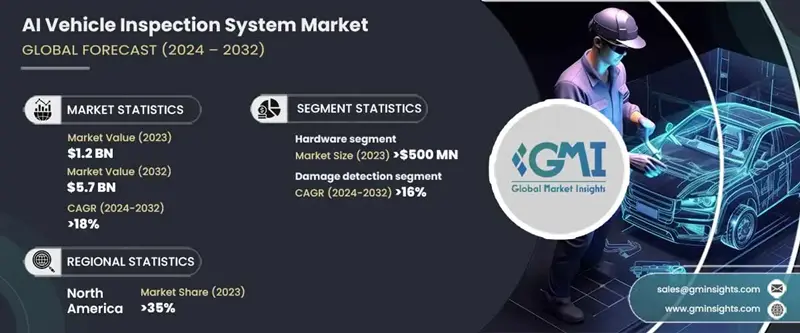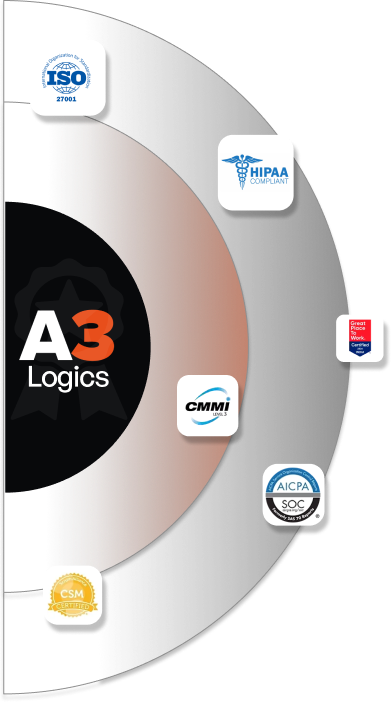Have you ever taken your damaged vehicle for repairs, only to find that your insurance claim didn’t cover all the costs? AI Vehicle Damage Detection provides accurate assessments upfront, helping you avoid unexpected expenses.
This scenario can put you in a tough spot as you may find it difficult to arrange the right funds. Things can get worse if you are already dealing with the consequences of personal injuries from the accident, such as medical bills or recovery costs. In such an event, AI-powered vehicle damage detection software can help you get an estimate or near-accurate cost of the damage. This could help you better manage your finances and reduce any additional stress.
What is AI-Powered Vehicle Damage Detection Software?

Source – DeGould
AI-powered vehicle damage detection software is a technology that uses artificial intelligence and computer vision to automatically analyze the images of a vehicle, identifying and assessing any damage like scratches, dents, or broken parts. Based on this, it provides a detailed report on the extent of damage. It eliminates the need for manual inspection.
How Does AI Detect and Estimate Vehicle Damage?
AI algorithms analyze images of the damaged vehicle from various angles, first identifying key features and then comparing them to a database of known damage types. Additionally, machine learning models, such as convolutional neural networks, precisely locate the damaged areas of the vehicle. By doing so, they effectively distinguish between components like the hood, bumper, or fender.
For a more detailed analysis, the system uses advanced techniques like instance segmentation. These techniques further refine damage detection by isolating individual damaged regions within an image.
Once AI detects the damage, it further segments the kind of damage—for example, scratch, dent, crack, etc.
It also assigns a severity level – minor, moderate, severe. Finally, based on all the segmentation and information collected, AI provides an estimated repair cost.
Table of Contents
AI Vehicle Damage Detection and Estimation Software: Key Statistics
- AI vehicle damage detection software can achieve accuracy rates of up to 95% – Shaip
- AI tools reduce vehicle inspection times by up to 60%, with complete inspection reports being sent within 30 seconds – Auto Dealer Today
- The market size for AI Vehicle Inspection Systems was valued at $1.2 billion in 2023 and is projected to register a CAGR of over 18% between 2024 and 2032 – Global Market Insights
- 720,000 patents have been filed and granted till 2024 in the automotive industry in AI in damage estimation – GlobalData

Benefits of AI-Based Vehicle Damage Assessment Software
Reduce In Inspection Times
A recent study found that vehicle damage estimation software can reduce vehicle inspection times by up to 60%. In addition to that, the tool can send complete condition reports in as little as 30 seconds.
Instead of depending on manual inspection, the software automates the whole assessment process with the help of AI. The software analyzes images of the damaged vehicle within seconds and quickly reports the damage it identifies. It also sends reports to insurers and repair shops, enabling them to process claims faster.
More Detailed Inspection
Algorithms in AI vehicle damage detection software use media to find damages automatically. The AI further helps distinguish between various kinds of damages, such as scratches, dents, scrapes, dings, bumps, etc.
More Transparency
Transparency is one of the key benefits of using AI-based vehicle damage assessment software. The software’s machine learning algorithms automatically detect the vehicle’s exterior body and assess the extent of the damage. The system identifies vehicle damages not only for insurance purposes but also to estimate repair costs.
Key Technologies Behind AI Vehicle Damage Detection
1. Machine Learning and Deep Learning
Using machine learning development services in AI vehicle damage detection involves feeding algorithms lots of data. This data includes elements like images of the vehicle and the damage states. Over time, the algorithms learn from patterns and can differentiate between damaged and non-damaged vehicles.
Deep learning, on the other hand, is a subset of machine learning that uses neural networks designed to mimic how a human brain functions. Again, it is trained on vast amounts of data, as we had just discussed.
Apart from detecting major damages, the deep learning models can also detect subtle damages such as paint chips, and minute scratches. They can also ascertain the severity of the damage as well.
2. Computer Vision and Image Processing
In vehicle damage detection using AI, multiple-angle imaging captures vehicle damages from different viewpoints. This gives AI varied perspectives on the damage. As a result, there are fewer negatives or false positives caused by perspective variation and reflections.
3. Data Annotation and Training Models

Source – paperspace
Once the system collects the data, it automatically identifies and analyzes objects and scenarios to determine the extent of the damage. To do that, there are data annotators. These annotate thousands of videos and images to train ML models. They can help annotate damages such as dents, scrapes, paint chips, cracks, and others on vehicle parts such as bumpers, quarter panels, doors, engines, hoods, etc.
4. Natural Language Processing (NLP)
NLP or natural language processing can analyze the driver’s description of the damage, whether typed into a text field or spoken into a voice recognition system. For instance, a driver might report damage saying, “A scratch on the right door.” NLP systems are trained to pick such keywords and phrases. Based on these, they can categorize damage type, location, and even the security level.
5. Edge Computing
Edge computing is a system where AI algorithms designed specifically to identify vehicle damages run directly on the vehicle’s onboard sensors, like the camera. They process data in real-time, thereby eliminating the need to send large amounts of information to a remote server. This also prevents any delay in image analysis, as the system identifies damages such as broken parts, scratches, and dents in real-time.
Steps to Develop AI Vehicle Damage Detection Software
The development of AI vehicle damage estimation software mainly involves 8 steps –

Source – altoros
Step 1: Define Objectives & Requirements
To define the tool’s function clearly, an AI development company should start by analyzing the specific needs of the automotive service provider – body shops, insurance companies, etc. To do that, conduct market research to identify core issues such as processing speed, assessment accuracy, and scalability. Based on that, outline the features required to meet these demands.
Step 2: Data Collection & Preprocessing
High-quality annotated data is the key to conducting AI vehicle damage detection. Collect a large database of vehicles demonstrating different kinds of damage. You can partner with the insurer’s repair centers or use public datasets. Once you have collected the data, i.e., images or videos, annotate them with details such as damage type, severity, and location.
Step 3: Select AI Model & Frameworks
After annotating the data, the next step involves choosing the right AI models and framework. CNN or convolutional neural networks, for instance, are used to identify and assess vehicle damage. It is important that you zero down on a model architecture that offers the best speed and accuracy for your vehicle damage estimation software. For efficiency and flexibility, you can integrate deep learning frameworks like PyTorch and TensorFlow.
Step 4: Train the AI Model
To make the AI better at detecting vehicle damage, you need a strong training system that can handle and process many vehicle images quickly. First, prepare the images by cleaning and adjusting them. This step is also known as preprocessing. Next, enhance the model’s ability to generalize. To do that, include augmentation and normalization. If done successfully, the model will perform well across various vehicle models, damage types, and environmental conditions. And, this shouldn’t just be a one-time process, you should train your model regularly to check its reliability and accuracy.
Step 5: Develop an Image Processing Pipeline
Considering that the images and videos will be captured in different conditions, it is important that you develop an image processing pipeline. The workflow might include steps such as resizing images, enhancing their quality (if they are subpar), noise removal, etc. In addition, techniques like augmentation and normalization can help AI recognize damage under different angles, light conditions, and backgrounds. Not only will the pipeline help get high-quality data, but it will also help improve the model’s accuracy for various types of vehicles.
Step 6: Build a User Interface (UI) & Application
The next step is to design a user-friendly interface on a mobile device or computer where users can input vehicle images, clearly view damages, and access detailed damage reports. They should also be able to perform related tasks like schedule repairs.
Here are the kinds of components that should be present in the vehicle damage detection UI & application –
- A clear upload area where users can select and upload the images of their vehicles.
- An area that clearly shows the uploaded vehicle image often highlighting/ marking/ color coding the damaged areas. This area further color codes the damages and also annotates them.
- As an option, the application should let users capture images directly using the device’s camera.
- Option to generate detailed reports outlining affected parts, damages determined, damage severity, estimated damage cost, and other key metrics.
Step 7: Integrate AI with Insurance & Auto Repair Systems
The core purpose of developing AI-based vehicle damage estimation software is to provide users with an accurate repair cost estimate and facilitate seamless claim processing for damaged vehicles. The AI-powered software helps automotive insurance companies identify risks like insurance fraud and calculate premiums based on risk levels.
Step 8: Deploy & Test the Software
The step involves deploying the vehicle damage detection software in a real-world environment and checking if it works as expected. The “testing phase” refers to the process of evaluating the accuracy and reliability of the AI model, and finding out if there are any evident flaws that could further hamper user experience. The “deployment phase” integrates the fully tested AI-powered damage detection software into a practical system such as a vehicle inspection station or a mobile app. This is where the end-user will actually upload the images of the damaged vehicle to find out the extent of the damage.

Challenges in Developing AI-Based Damage Estimation Software
Developing an AI-based damage estimation software comes with its share of challenges. The section highlights some of the common challenges in developing AI vehicle damage detection software. By knowing these, teams, stakeholders, developers, and end-users will have a fair idea of the potential roadblocks, and better systems can be created.
Absence of Proper Data
The real-world images of vehicular damages often have reflective materials and metallic surfaces. Procuring proper training data can, therefore, pose a major challenge as these reflections can be misunderstood as damages.
The next hurdle is the unavailability of enough data i.e. lack of a comprehensive set of images captured in varied environments. In the absence of such data, it can be difficult to train the model to make accurate or near accurate predictions.
Also, since you may not be able to find images in the public database, you may have to work hard to research such images on the web or work with car insurance companies who generally keep a database of images of vehicular damages.
Preprocessing
If you navigate to this section, you’ll see how important it is to preprocess images in a controlled environment. If you forgo this step, the images might appear blurry, too bright, or out of focus, and the output might not be very accurate.
False Positives
When assessing vehicle damage, there are chances of false positives. This means the software might detect damages when in actual case, there are none. To overcome this challenge, a two-tier identification and classification model can be used. The first step will involve binary classification where two categories will be classified based on images. If the system identifies that the vehicle is damaged, the second tier will come into place, where it will start identifying the kind of vehicular damage.
Use Cases of AI in Vehicle Damage Detection
1. Automated Insurance Claims Processing
In insurance claims processing, the AI can analyze photographs of vehicle damages to assess repair costs and even determine any faults that have occurred because of accidents. Furthermore, insurers can reduce the expense of hiring and training inspectors, and also reduce costs on logistics and travel. This would translate to handling and processing more claims in a lesser amount of time thereby improving operational efficiency and increasing customer satisfaction.
2. Accident Damage Assessment
AI assesses accident damage by analyzing images of a damaged vehicle using machine learning algorithms and computer vision. It automatically detects damaged areas, evaluates the severity, and estimates the repair costs. Users capture images and videos from various angles and upload them to the AI-powered system.
3. Rental Car Inspections
When renting cars, there are often chances that the customer might be wrongly charged for damages not caused by him. Similarly, it could also be that a customer might try to get away with the damage they have caused. In either situation, AI can automate the process of analyzing images taken for damages like scratches, dents and other imperfections.
4. Fleet Maintenance & Monitoring
Artificial intelligence offers various ways to improve fleet maintenance and monitoring. Fleet systems primarily use AI for predictive maintenance by analyzing vehicle data from sensors to proactively identify potential issues and schedule maintenance accordingly. AI also optimizes routes by anticipating heavy traffic, thereby minimizing downtime and preventing breakdowns.
5. Automated Vehicle Inspection at Dealerships
Here, an AI-powered computer vision system analyzes videos and images to assess damages, defects, and irregularities. It processes these multimedia elements in real-time, eliminating the need to store them on a cloud.
6. Real-Time AI-Based Vehicle Diagnostics
For detection of vehicle damage, an AI software uses machine learning algorithms to analyze data collected from vehicle’s sensors in real-time. Based on this data, it identifies any potential issues and anticipates any component failures before the situation becomes critical. It essentially enables predictive maintenance by detecting anomalies in sensor reading, engine metrics and other vehicle data. In case, there are any critical anomalies, repairs can be carried out at an early stage.
Cost of Developing AI Vehicle Damage Detection Software
Below are approximate costs for developing AI vehicle damage detection software. Actual costs may vary based on project complexity, features, technology stack, and team expertise, potentially increasing or decreasing accordingly.
| Category | Description | Approximate Cost Range |
| Research and Development | Image processing, AI training, data collection, testing & validation, damage analysis, and object detection | $5000 – $22000 |
| Front-End Development | Web dashboard, UI design, and mobile app | $1000 – $8000 |
| Back-End Development | API creation, cloud setup, and database design | $1000 – $6000 |
| Testing & quality assurance | Integration, unit, and user acceptance testing | $1000 – $6000 |
| App Features | Real-time detection, image upload, and cost estimation, insurance system integration, and report generation | $2000 – $18000 |
| Total Approximate Cost | $10000 – $100000 |
Best Practices for Implementing AI Damage Detection in Auto Insurance
Use Diverse, High-Quality Data
In order to improve the accuracy and generalization of AI models for damage detection, train them using a wide range of high-resolution images. The images should comprise various car models, various types of damages (such as dents, missing window, flat tyre, rust, cracks, scratches, etc). The images should also be taken in various lighting conditions (such as shadows, sunlight, reflections, etc). Once trained the model will be able to analyze damages accurately regardless of the scenario.
Make Sure That The AI Integrates Seamlessly With Insurance Systems
By connecting the AI to insurance platforms, repair cost estimates and damage assessments can be generated and shared automatically reducing the need for manual input. The integration also expedites claim approvals, provides a smoother experience, and minimizes errors.
Monitor Driver Performance
Ai systems can continuously monitor driver’s traffic conditions, behaviour and data based on in vehicle sensors. On the basis of this data, the system can detect the risk and severity of road accidents, and alert drivers beforehand. The data can also be used to help drivers improve their driving skills.
Incident Reconstruction
Based on the in-vehicle sensor data and dash camera footage the details of vehicle accidents can be recreated. The AI-generated timeline of the accident helps speed up accident investigation and claims processing while eliminating the chances of any fraudulent claims.

Why Choose A3Logics for AI Vehicle Damage Detection Software Development?
If you are planning to develop an effective and reliable AI vehicle damage detection software, it is crucial that you opt for the right AI development company. An experienced team ensures that it uses advanced algorithms for accurate damage assessment and faster claim processing. A3Logics is one such company.
A3Logics is transforming the automotive industry with custom software development services. These intelligent upgradeable platforms enable real-time diagnostics, personalized service experiences, and over-the-air updates.
A3Logics leverages vehicle data analytics and AI services that empower businesses to extract actionable insights from vast vehicle-generated data. Our automotive development solutions improve overall vehicle performance while supporting data-driven decision-making.
- To streamline automotive insurance, financing, and leasing, A3Logics is adept at developing AI-powered image analysis tools that can easily detect inconsistencies in submitted photos. The technology helps verify the authenticity of damage claims.
- We develop predictive analytics platforms to use historical data, machine learning, statistical analysis, and other advanced techniques to predict future trends and identify patterns.
- We can create AI solutions that can integrate seamlessly with an insurer’s corporate systems, customer-facing apps, and relevant third-party data sources to instantly capture structured and unstructured claim-related data.
- With the intent of mitigating road mishaps, A3Logics specializes in developing AI-powered driver Behavior Analysis Tools. These use AI algorithms to monitor and analyze a driver’s action while operating a vehicle and identify any potential risky behavior.
Conclusion
Up until now, vehicle damage assessment was a tedious process leading to insurance settlement procedures extending days. From what we can infer from the post, soon manual inspection of vehicles for any possible damages will be a thing of the past. AI is taking over the heavy-duty tasks of vehicle damage assessment by automating inspections and identifying dents, scratches, and structural issues with high precision. To add on AI-based systems can process multiple claims in a relatively shorter span of time. With these tools, customers can get instant and accurate vehicle damage reports, faster insurance claim approvals, transparent repair estimates, and an overall smoother, hassle-free experience without the need for manual inspections or long wait times.





